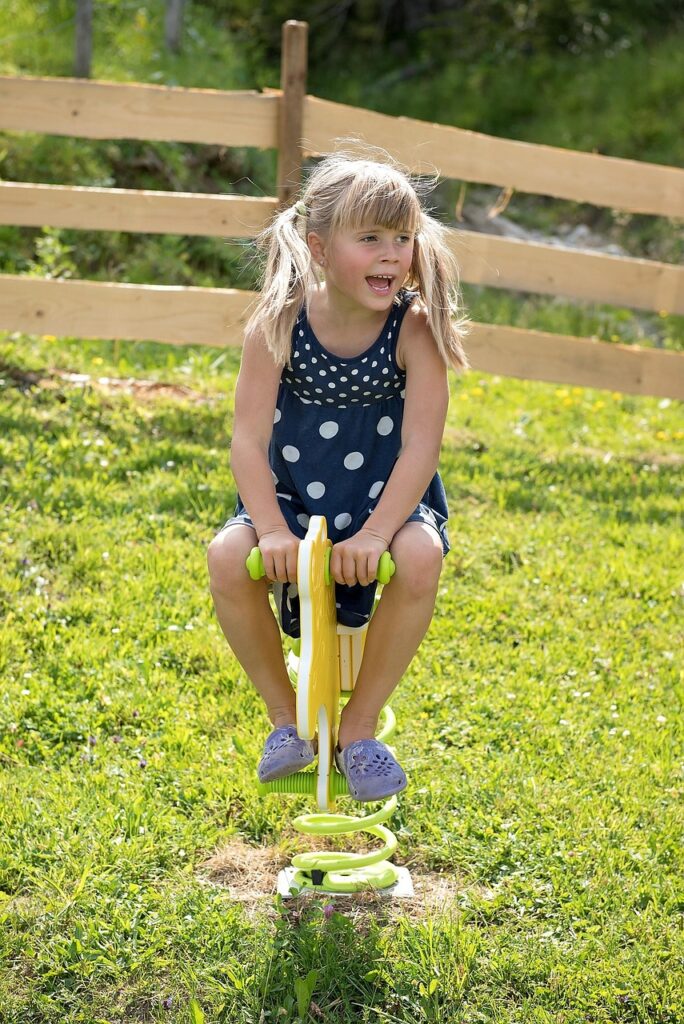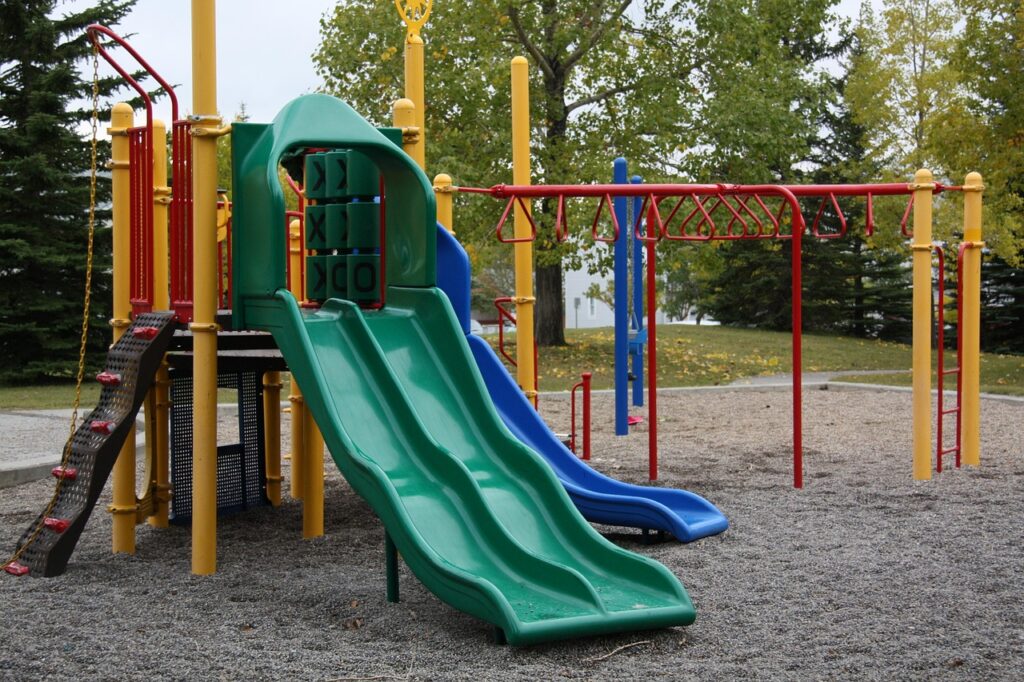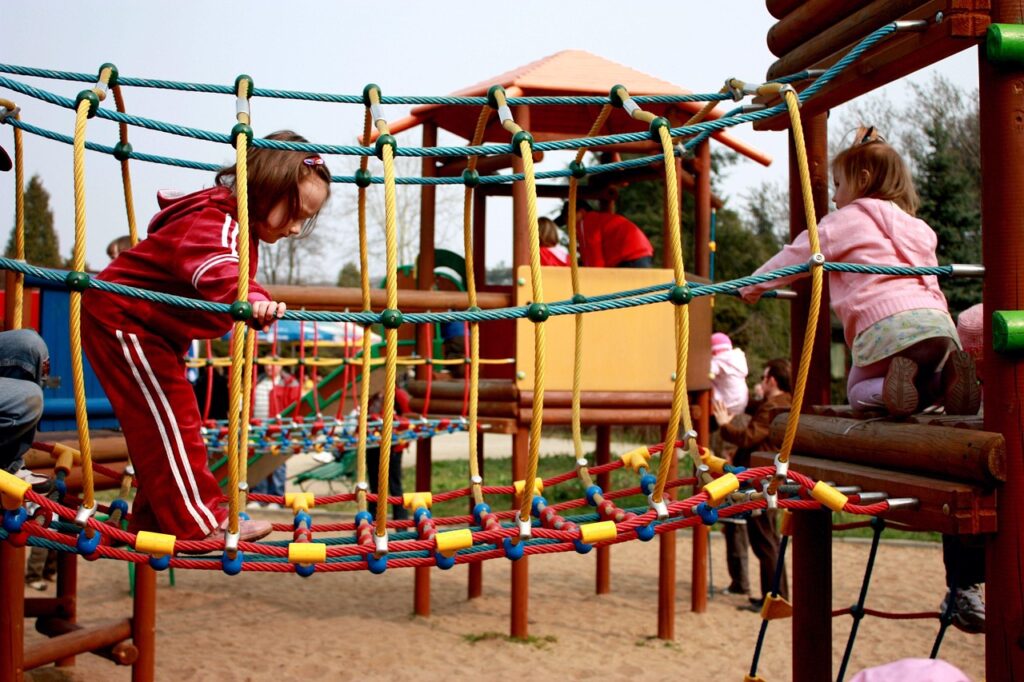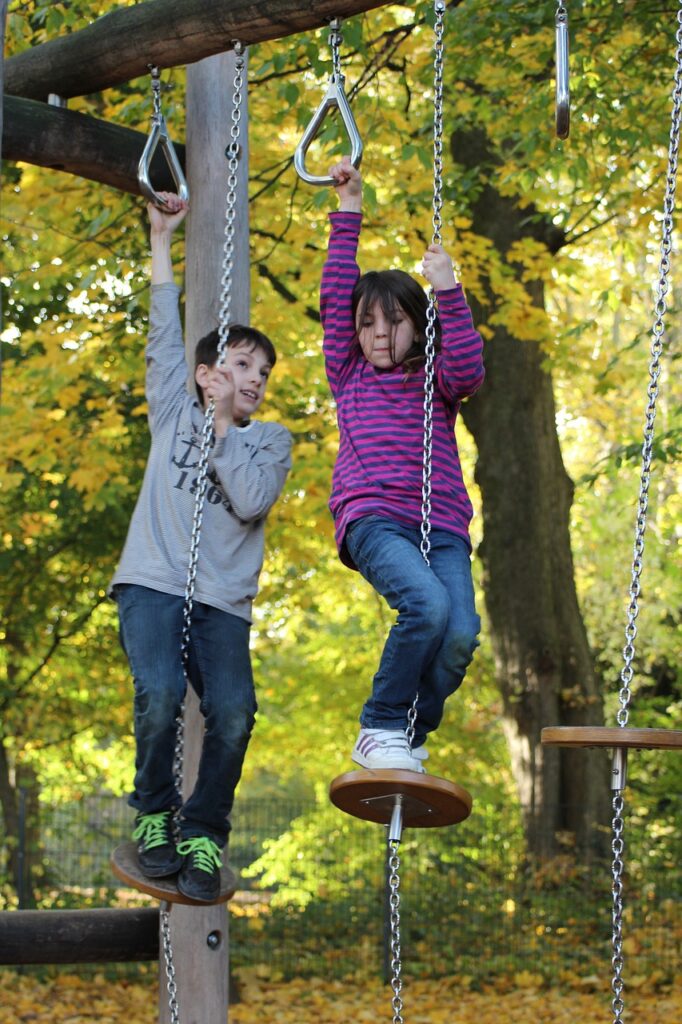
Introduction: Why Play Matters More Than Ever
In an age where screen time is replacing swing time, playgrounds and play equipment are more critical than ever. Play is more than just a leisure activity—it’s a powerful tool for holistic development in children. Studies consistently show that active play contributes to a child’s physical, cognitive, social, emotional, and creative development.
At Quality Fiber & Plastic Products, we design and manufacture scientifically-crafted play equipment that enriches a child’s growth journey. In this comprehensive guide, we’ll explore how thoughtfully designed play environments can transform childhood into a foundation for lifelong success.
Chapter 1: Physical Development – Strength, Coordination & Motor Skills
Physical development forms the bedrock of a child’s early growth. Playgrounds offer a safe and structured environment where children can develop essential physical skills. Let’s break down how each category of physical development is influenced by play equipment.
1.1 Gross Motor Skills
Gross motor skills involve large muscle groups responsible for actions such as walking, running, jumping, and climbing. Equipment like swings, monkey bars, climbing walls, and rope ladders help enhance:
- Muscle strength: Pulling themselves up builds arm, shoulder, and back strength.
- Endurance: Repeated activity improves cardiovascular health and stamina.
- Coordination: Coordinating arms and legs during climbing boosts neuromuscular control.
1.2 Balance and Posture
Playgrounds challenge a child’s equilibrium through beams, wobble bridges, and rotating equipment. These tools help improve:
- Core stability
- Postural alignment
- Spatial awareness
These foundational skills are crucial for both sports and academic activities such as sitting properly in a classroom.
1.3 Fine Motor Skills
Although playgrounds focus on gross movement, they also aid fine motor development. Activities such as turning knobs, handling activity panels, or using ropes for climbing fine-tune hand and finger coordination.
1.4 Reflex and Agility
Reaction-based games and structures (like spring-loaded balance boards or agility courses) train children in fast reflexes and decision-making.
Conclusion: A well-rounded playground promotes not just fun, but fundamental fitness.

Chapter 2: Cognitive Development – Thinking, Problem Solving & Focus
Children learn best through doing. Playgrounds are immersive environments where learning happens naturally and joyfully. Here’s how they boost mental faculties.
2.1 Memory and Sequencing
Many play activities require children to remember sequences—like climbing steps, crawling through tunnels, then sliding down. This sequential learning boosts both working and long-term memory.
2.2 Problem-Solving and Decision-Making
Obstacle courses or puzzle-based play stations challenge children to think critically. They learn:
- How to navigate from one point to another
- Assessing risks and rewards
- Strategic planning and execution
2.3 Focus and Concentration
Play requires attention. Whether it’s balancing on a rope or fitting shapes into slots, children must concentrate—enhancing their ability to focus for longer periods.
2.4 Academic Foundations
Educational panels with numbers, alphabets, and colors reinforce early literacy and numeracy in an engaging way.
Conclusion: Playgrounds are open-air classrooms fostering essential academic skills through real-life learning.

Chapter 3: Social Development – Communication, Sharing & Teamwork
No child grows alone. Social development is crucial, and playgrounds serve as a child’s first social laboratory.
3.1 Cooperation and Sharing
Multi-user structures like see-saws and merry-go-rounds teach:
- Taking turns
- Patience
- Compromise
These are all vital traits for teamwork and collaboration.
3.2 Conflict Resolution
Disagreements are natural in play. Children learn to:
- Resolve disputes
- Express their needs respectfully
- Understand others’ perspectives
3.3 Empathy and Inclusion
Inclusive play zones with adaptive equipment encourage empathy and friendship among kids of all abilities.
3.4 Leadership and Role Play
Playgrounds are fertile ground for developing leadership through imaginative scenarios. Children assign roles, lead games, and manage group dynamics.
Conclusion: Social skills built on playgrounds pave the way for leadership and emotional maturity.

Chapter 4: Emotional Development – Confidence, Self-Esteem & Resilience
Emotional intelligence is equally important as academic intelligence. Playgrounds offer safe opportunities for emotional exploration and growth.
4.1 Building Confidence
Climbing high, sliding fast, or balancing on beams—each success story builds self-assurance.
4.2 Overcoming Fear
Children learn to handle anxiety and fear in manageable steps—like going down a tall slide or navigating new structures.
4.3 Learning to Lose and Try Again
Failure is part of play. When a child falls and tries again, they develop resilience and perseverance.
4.4 Expressing Emotions
Creative and role-based equipment provides children the opportunity to act out and express complex emotions in a safe environment.
Conclusion: A confident, emotionally resilient child is better equipped to handle challenges both in school and in life.

Chapter 5: Creative Development – Imagination, Role-Play & Expression
Playgrounds fuel the imagination—children turn slides into spaceships and tunnels into caves.
5.1 Role-Playing Structures
Playhouses, castles, or shops encourage pretend play. This boosts:
- Language development
- Storytelling skills
- Emotional processing
5.2 Art-Inspired Equipment
Colorful shapes, interactive murals, and sound-generating play tools inspire:
- Artistic expression
- Musical creativity
- Sensory exploration
5.3 Nature-Inspired Play
Incorporating sand pits, water play areas, and climbing rocks connects children with nature, sparking curiosity and a love for the outdoors.
Conclusion: Creativity sparked on a playground shapes innovative minds and adaptive thinkers.

Chapter 6: Holistic Benefits of Outdoor Play Equipment
Outdoor play offers benefits that span all developmental areas:
- Boosts Vitamin D and immunity
- Reduces screen time and mental fatigue
- Encourages independence and responsibility
- Develops a love for physical activity
With outdoor play, children don’t just grow—they flourish.
Chapter 7: Play Equipment for Different Age Groups
7.1 Toddlers (1–3 years)
- Low slides
- Soft climbers
- Tunnels
- Sensory boards
7.2 Preschoolers (3–5 years)
- Playhouses
- Activity panels
- Mini obstacle courses
- Spring rockers
7.3 School-age Children (6–12 years)
- Climbing nets
- Rope bridges
- Fitness zones
- Adventure play structures
Conclusion: Age-appropriate equipment ensures safety while challenging kids at their developmental level.
Chapter 8: Why Schools, Resorts, and Builders Should Invest in Play Equipment
8.1 Schools
- Improves child engagement
- Supports learning outcomes
- Attracts admissions through value addition
8.2 Resorts & Clubs
- Enhances family experience
- Increases guest retention
- Builds brand loyalty
8.3 Builders & Layout Developers
- Adds lifestyle value to properties
- Improves resale and rental value
- Aligns with sustainable development goals
Conclusion: Quality playgrounds are powerful tools for community building and branding.
Final Thoughts: Your Partner in Purposeful Play
At Quality Fiber & Plastic Products, we believe in designing for impact. Every swing, slide, and see-saw we create is backed by science, safety, and soul. With over 21 years of excellence and 1500+ clients, we’ve reimagined what play can do.
From customized solutions to eco-friendly designs, we’re here to partner with schools, resorts, communities, and builders in creating joyful and developmentally-rich play environments.
Want to Build a Brighter Future?
📞 WhatsApp: +91 78925 12743
📍 Factory: #139 & 140, Byraveshwara Industrial Estate, Peenya, Bangalore
🌐 Visit: www.qualityfrp.in
Let’s bring happiness, health, and holistic development to every child—one play zone at a time.
This guide is ideal for educators, architects, CSR planners, and anyone who values the true power of play.
